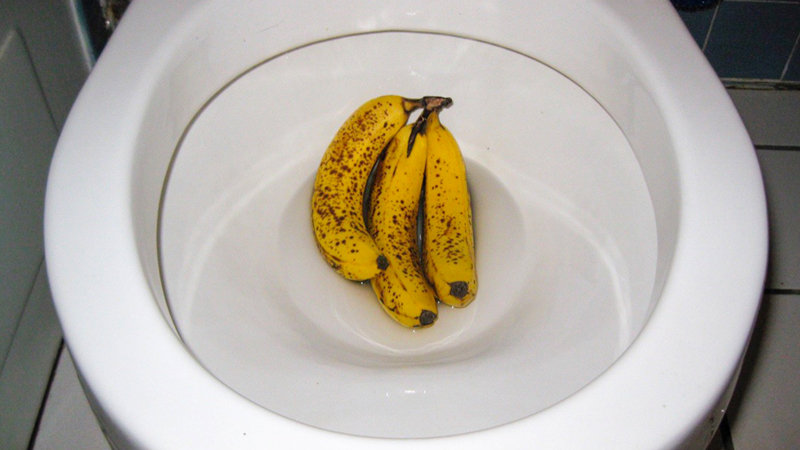We've found this article relating to What Can Happen If You Flush Food Down the Toilet? directly below on the internet and accepted it made good sense to write about it with you on my blog.

Intro
Many people are commonly faced with the problem of what to do with food waste, particularly when it concerns leftovers or scraps. One usual inquiry that occurs is whether it's okay to purge food down the toilet. In this article, we'll delve into the reasons people might take into consideration purging food, the effects of doing so, and alternate techniques for appropriate disposal.
Reasons why people might take into consideration purging food
Absence of recognition
Some individuals might not know the prospective damage caused by purging food down the bathroom. They might erroneously believe that it's a harmless method.
Ease
Purging food down the commode may seem like a quick and very easy option to getting rid of unwanted scraps, especially when there's no close-by trash can readily available.
Laziness
In many cases, individuals might just choose to flush food out of sheer laziness, without taking into consideration the repercussions of their actions.
Repercussions of flushing food down the toilet
Ecological influence
Food waste that ends up in waterways can contribute to pollution and injury marine communities. Additionally, the water made use of to flush food can strain water sources.
Pipes issues
Flushing food can lead to clogged up pipelines and drains, creating costly plumbing repair work and hassles.
Sorts of food that should not be flushed
Fibrous foods
Foods with coarse appearances such as celery or corn husks can get tangled in pipes and create obstructions.
Starchy foods
Starchy foods like pasta and rice can take in water and swell, bring about obstructions in pipes.
Oils and fats
Greasy foods like bacon or cooking oils must never be flushed down the commode as they can strengthen and create clogs.
Appropriate disposal approaches for food waste
Utilizing a waste disposal unit
For homes geared up with waste disposal unit, food scraps can be ground up and purged via the pipes system. Nonetheless, not all foods are suitable for disposal in this fashion.
Recycling
Particular food product packaging materials can be recycled, lowering waste and lessening environmental effect.
Composting
Composting is an environment-friendly means to deal with food waste. Organic materials can be composted and utilized to enhance dirt for gardening.
The relevance of proper waste administration
Decreasing environmental harm
Appropriate waste administration methods, such as composting and recycling, aid reduce pollution and preserve natural resources for future generations.
Protecting plumbing systems
By preventing the method of flushing food down the commode, homeowners can stop costly pipes repair work and preserve the stability of their plumbing systems.
Conclusion
In conclusion, while it may be alluring to purge food down the bathroom for comfort, it is essential to understand the prospective effects of this action. By embracing appropriate waste monitoring methods and dealing with food waste responsibly, people can contribute to healthier pipes systems and a cleaner setting for all.
FLUSH FOOD DOWN THE TOILET?
FLUSHING FOOD CAN CAUSE BLOCKED DRAINS IN YOUR HOME
All of the plumbing fixtures in your home are connected to the same sewer pipe outside of your home. This outdoor sewer pipe is responsible for transporting all the wastewater from your home to the Council sewer mains. Even small pieces of food that go down the kitchen sink can cause problems for your sewer. It should therefore be obvious that flushing larger bits of food, such as meat, risks a clog in either the toilet itself or the sewer pipes. Flushing greasy food is even more problematic because oil coagulates when it cools, coating the interior lining of your pipes.
THE TOILET IS NOT A BIN
Food isn’t the only thing that people shouldn’t be flushing down the toilet. People use the toilet to dispose of all kinds of things such as tampons, makeup wipes, dental floss, kitty litter and even underwear. Water goes to great lengths to educate residents about the high costs and stress placed on wastewater treatment systems simply from people flushing the wrong stuff down the toilet. It costs taxpayers millions of dollars each year, and homeowners thousands in blocked drain repairs.
FLUSHING FOOD IS A WASTE OF WATER
Flushing food is a waste of our most precious resource - water. In June this year Level 1 water restrictions were introduced to protect water supply from drought conditions. Much of New South Wales continues to be affected by prolonged drought with recent figures revealing up to 97 per cent of the state remains in drought. Depending on whether you have a single or dual flush toilet, every single flush uses between five and 11 litres of water. In the current climate this is a huge amount of water to be wasting on flushing food that should be placed in the bin (or better yet, the compost).
https://www.jabplumbingsolutions.com.au/blog/can-you-flush-food-down-the-toilet

Do you like more info about Flushing Food Down the Toilet?? Make a remark down below. We'd be delighted to listen to your opinions about this blog. In hopes that you visit us again before long. Enjoyed our review? Please share it. Help other people locate it. Thank you so much for your time spent reading it.
Click Here